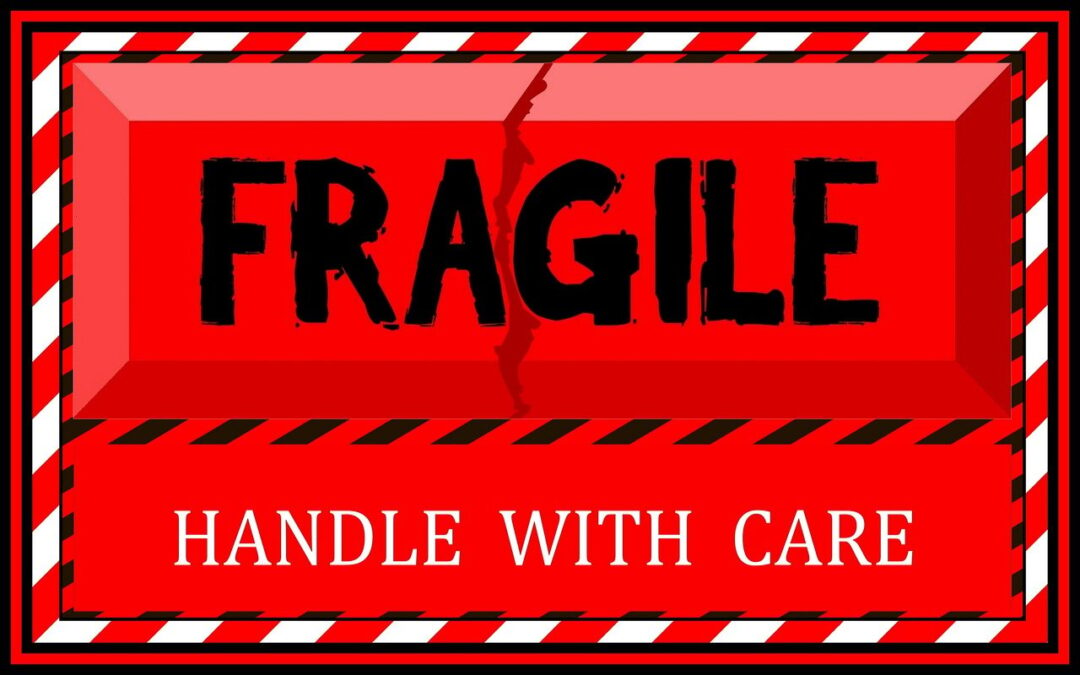
by Joy Maitland | Nov 27, 2025 | Board Members, Board Trustees, CEO, CFO, COO, CIO, General Managers, Heads of Divisions, Human Resources (HR), Managing Directors, Middle Managers, Non-Executive Board Members, Senior Managers
Agency is the point where ability meets action, and where leadership either accelerates or quietly stalls. A conversation about initiative, ownership, self-direction, and psychological permission
The leadership quality few people name
When senior leaders talk about why some individuals advance and others stagnate, they often struggle to articulate the difference. Two people can have the same intelligence, the same experience, and the same capability, yet their career trajectories diverge dramatically.
The missing differentiator is agency. It is the quiet force that separates those who wait from those who step forward, those who observe from those who act, and those who stay in place from those who expand their influence.
What agency really means
Agency is not authority. It is not confidence. It is not enthusiasm. Agency is the belief that you have the right and the responsibility to shape outcomes rather than respond to them.
Leaders with agency do not wait to be invited. They do not ask for permission to contribute. They do not shrink in the presence of ambiguity. They step into space that others leave empty.
Agency is where ability becomes action.
How agency reveals itself in leadership
You can see agency in subtle behavioural signals.
- The leader who anticipates rather than reacts.
- The colleague who moves a decision forward instead of escalating it upward.
- The manager who resolves issues rather than narrating them.
- The individual who expands their role rather than defending its limits.
These people do not push aggressively. They advance naturally.
Why agency is disappearing in some organisations
Many organisations unintentionally create dependency. Systems reward compliance. Cultures punish initiative. Leaders who need control prevent others from acting. Feedback focuses on risk rather than growth.
In such environments, even capable leaders learn to wait. They begin to look upward instead of inward. They trade agency for approval.
The organisation does not become safer. It becomes slower.
The psychological side of agency
The greatest barrier to agency is not competence. It is permission. It is the internal voice that asks:
- Am I allowed to act?
- Do I risk being criticised?
- Will someone say I overstepped?
- What if someone else should have done this?
Leaders who lack agency are often not passive. They are cautious. And caution masquerading as professionalism is one of the greatest blockers of leadership growth.
The moment agency becomes visible
There is a distinct turning point in leadership development. It is when a person shifts from waiting to contributing, from following to shaping, from executing to initiating.
This shift does not require a new title. It requires a new self-concept. The moment someone begins to see themselves as a creator of momentum, their leadership trajectory changes permanently.
How organisations can develop agency rather than suppress it
Agency strengthens when leaders create environments where initiative is met with respect rather than suspicion.
- Invite contribution rather than command compliance.
- Reward thoughtful action more than cautious observation.
- Respond to mistakes with learning rather than embarrassment.
- Give responsibility before certainty.
People grow into the space leadership makes available.
How individuals strengthen their own agency
There are practical behavioural signals that build agency from within.
- Say what you think, not only what is safe.
- Offer solutions rather than commentary.
- Take ownership of outcomes, not just tasks.
- Act before being asked when clarity already exists.
Agency is exercised before it is recognised. Recognition follows.
A closing reflection that invites self-assessment
Agency is the silent separator between leaders who move forward and leaders who stay where they are. It is the inner permission to act, decide, contribute, lead, and shape outcomes without waiting for someone else to create the opening.
Here is a question worth asking yourself and those you develop.
Do I move because I am instructed, or because I recognise what needs to be done?
And here is the insight that becomes impossible to ignore once seen:
Leadership progression does not begin when the organisation grants authority, but when the individual claims agency.
The leaders who rise are the ones who stop waiting for validation and start operating as though their contribution matters. Because it does.
The Right Conversation Can Change Everything. Let’s Talk.

by Joy Maitland | Nov 26, 2025 | Board Members, CEO, CFO, COO, CIO, General Managers, Heads of Divisions, Human Resources (HR), Leadership Development, Managing Directors, Middle Managers, News & Articles, Non-Executive Board Members, Senior Managers
Why leaders feel they must soften expectations and how rising sensitivity reshapes performance conversations and leadership confidence.
A shift leaders have noticed but rarely name
Many leaders are saying privately that it has become harder to set expectations, give direct feedback, or uphold standards without triggering defensiveness, disengagement, or emotional reaction. What once would have been a normal performance conversation now requires careful preparation, softened language, and emotional cushioning.
This is not because leaders have become harsher. It is because organisations have become more sensitive. Leaders describe it as walking on eggshells, even when their intentions are constructive and clear.
When accountability begins to feel dangerous
Leaders report that they hesitate before addressing missed deadlines, inconsistent delivery, or declining quality. They worry about how the message will be received, how the individual will interpret tone, and how quickly discomfort may escalate into grievance, withdrawal, or complaint.
Some say they now adjust expectations downward to avoid emotional disruption. Others say they absorb additional work rather than confront underperformance. Many say they have stopped being as honest as leadership requires.
The result is not kindness. It is avoidance. And avoidance erodes performance faster than incompetence ever could.
Why this fragility has emerged
Several forces have converged at once.
- A generation entering the workforce with different emotional norms.
- Anxieties amplified by uncertainty and economic pressure.
- Hybrid environments where signals are misread.
- A cultural narrative that discomfort equals harm.
In this climate, leaders are expected to protect emotional safety, sometimes at the cost of organisational effectiveness.
The paradox no one admits openly
- People want to be developed, yet resist feedback.
- Teams want autonomy, yet avoid accountability.
- Organisations want high performance, yet dilute standards.
- Leaders want to be supportive, yet fear being perceived as demanding.
This creates a workplace where expectations become softer, clarity becomes blurred, and excellence becomes optional.
The consequences leaders are already seeing
- Performance variation widens.
- Mediocrity becomes normalised.
- High performers become frustrated and quietly disengage.
- Leaders become cautious rather than confident.
- Teams become reactive rather than resilient.
When standards fall, culture weakens. When culture weakens, results decline.
The truth beneath the surface
Leaders are not lowering standards because they believe in less. They are lowering standards because they fear the reaction. And when fear shapes leadership behaviour, fragility spreads through the organisation like a silent fog.
How leaders restore strength without becoming harsh
The answer is not force. It is clarity. It is consistency. It is adult-to-adult communication.
There are approaches that rebuild resilience while maintaining trust.
- Define expectations explicitly rather than implicitly.
- Link feedback to purpose, not fault.
- Treat discomfort as a normal part of growth.
- Acknowledge emotion without being governed by it.
- Praise effort, but reward performance.
Resilience grows when challenge and support exist together.
The role modelling effect
When leaders demonstrate calm firmness, teams learn that high standards are a form of respect, not criticism.
When leaders speak truth without aggression, people learn that honesty is safe.
When leaders refuse to walk on eggshells, the organisation stops producing them.
Strength is contagious. But so is fragility.
Organisational fragility is not a problem of personality. It is a problem of culture. It emerges quietly and spreads through hesitation, avoidance, and emotional sensitivity that confuses guidance with judgment.
Here is a question worth exploring among leadership peers.
Are we protecting people from discomfort, or preventing them from developing capacity?
And here is the insight that lingers:
Organisations do not become fragile because leaders are too strong, but because leaders feel they must become weaker than the role requires.
The leaders who will strengthen their cultures are those who can uphold standards with humanity and communicate truth with steadiness. They will build workplaces where resilience returns, excellence is expected, and trust grows rather than fractures.
The Right Conversation Can Change Everything. Let’s Talk.

by Atiya Sheikh | Nov 26, 2025 | Board Members, Board Trustees, CEO, CFO, COO, CIO, General Managers, Heads of Divisions, Human Resources (HR), Leadership Development, Managing Directors, Middle Managers, News & Articles, Non-Executive Board Members, Senior Managers, Women Leaders
Facial analysis and behavioural AI in hiring: what it means for fairness, bias, and whether algorithms should influence decisions. Should they influence decisions? A provocative look at fairness, ethics, and the risk of replacing judgement with algorithms
A leadership dilemma that is emerging quietly
A growing number of technology platforms now claim they can analyse a candidate’s facial expressions, micro-movements, voice tone, eye focus, and behavioural signals to predict suitability for a role. Some claim to detect confidence. Others suggest they can assess emotional reliability. A few even imply they can identify leadership potential.
The question many leaders are beginning to ask is not whether this technology works, but whether it should be allowed to shape decisions that define someone’s future.
The appeal of certainty in an uncertain hiring landscape
Hiring has always involved uncertainty. Leaders have relied on interviews, CVs, intuition, references, and observation, only to discover strengths or limitations later.
It is tempting to believe that AI can remove doubt, reduce risk, and eliminate bias. The promise sounds compelling. Data feels objective. Algorithms feel neutral. Technology feels precise.
Yet here is the truth that many overlook. Facial analysis does not measure competence. It measures conformity to the patterns of those who designed and trained the system.
The human cost hidden beneath efficiency
If facial interpretation becomes a hiring gatekeeper, who gets excluded?
- What about those who are neurodivergent?
- What about cultural differences in posture, tone, or eye contact?
- What about candidates whose thoughtful expression reads as serious?
- What about individuals whose anxiety masks capability?
A system can quietly conclude that someone lacks confidence, warmth, or leadership presence, even if none of it reflects reality.
Technology can measure movement, but it cannot recognise humility, integrity, courage, empathy, or strength of character.
The myth of bias-free technology
AI is often presented as objective. But every dataset reflects the preferences, assumptions, norms, and demographics of the humans who built it.
- If historic hiring rewarded extroversion, the system will reward extroversion.
- If leadership has been modelled on a narrow profile, the algorithm will reproduce it.
- If certain faces have held power, those faces will be scored as more suitable.
Technology does not remove bias. It automates it. And it scales it.
Why leaders are vulnerable to adopting these tools now
Workforces are stretched. Talent shortages are real. Time to hire is under pressure. Boards want certainty. Regulators demand fairness. The cost of a hiring mistake feels higher than ever.
In moments of pressure, leaders are most likely to outsource judgement. But outsourcing judgement comes with a price. Once leaders surrender discernment, they surrender humanity in the process.
What hiring is truly about
Hiring has never been simply about selecting skills. It is about understanding potential. It is about recognising values. It is about sensing maturity, adaptability, resilience, and capacity to grow. It is about reading the person, not the face.
Leadership development is a human discipline. It requires human interpretation.
A more responsible path forward
Technology can support hiring, but it should never replace the leader’s ability to see the whole person.
There are three grounding questions that help leaders stay anchored.
- Is this technology enhancing fairness or disguising bias behind complexity?
- Is it improving insight or relieving leaders of uncomfortable responsibility?
- Is it honouring human dignity or reducing individuals to data points?
If leaders cannot answer confidently, the organisation should pause.
Facial analysis in recruitment may appear modern, efficient, and scientific. Yet beneath the surface lies a profound risk to diversity, fairness, and the essence of what it means to recognise talent.
Here is a question worth asking in any senior leadership conversation.
If your early career had been judged by an algorithm reading your face, would you be where you are today?
And here is the insight that stays with people long after the conversation ends.
The future of hiring should not be shaped by how a face is interpreted, but by how a leader recognises potential in another human being.
Leaders who understand this will build organisations that perform strongly, decide wisely, and remain unmistakably human.
The Right Conversation Can Change Everything. Let’s Talk.

by Joy Maitland | Nov 26, 2025 | Board Members, Board Trustees, CEO, CFO, COO, CIO, General Managers, Heads of Divisions, Human Resources (HR), Leadership Development, Managing Directors, Middle Managers, News & Articles, Non-Executive Board Members, Senior Managers
How leaders navigate constant exposure, scrutiny, and the loss of privacy in the workplace
A new and largely unspoken leadership pressure
There was a time when a leader could close a door, walk down a corridor, or switch off for an hour without consequence. Today, visibility follows leaders everywhere. A neutral facial expression on a video call becomes a topic of speculation. A delayed reply becomes a sign of concern. A brief moment of quiet becomes an invitation for others to fill in a narrative.
Many leaders now say the real work is not leading the organisation. The real work is managing how the organisation interprets them.
This is not about ego. It is about the psychological weight of being continuously observed.
When visibility becomes a form of surveillance
Leaders tell us they feel they are always performing, that they cannot arrive tired, thoughtful, distracted, or simply quiet. Someone will read into it. Someone will attach meaning. Someone will whisper a conclusion.
A leader enters a meeting and someone asks if they are upset simply because their expression is neutral. Another speaks less in a discussion and is told their silence felt ominous. A third declines a social gathering and rumours begin about organisational tension.
The higher a leader rises, the less freedom they have to simply be a person.
Visibility has stopped being a stage for influence and has become a space where leaders lose the right to be human.
The hidden consequences that reshape leadership
Constant visibility affects decision-making because leaders begin to choose what will be perceived well rather than what is right.
- It affects authenticity because leaders edit themselves before speaking.
- It affects confidence because self-belief becomes tied to interpretation.
- It affects wellbeing because there is nowhere to be unobserved.
Here is the deeper truth. Constant visibility rewires leadership behaviour more than any organisational policy.
Leaders are not burning out from workload. They are burning out from being watched.
Why this pressure has intensified now
Digital communication has amplified micro-signals. Facial cues, tone, eye movement, posture, response speed, and emotional expression are now studied in real time by teams who are also under pressure and seeking certainty.
Leaders are being evaluated on presence, composure, warmth, and accessibility, often before outcomes are even considered.
This creates a leadership environment that feels like a spotlight without a switch. Humans are not built for perpetual exposure, yet leadership now demands it by default.
The leadership paradox no one resolves aloud
- People want leaders to be authentic but never too emotional.
- Confident but never forceful.
- Visible but never dominating.
- Approachable but never vulnerable.
- Composed but still relatable.
So leaders perform a calibrated version of themselves. Performance replaces presence. And performance is exhausting.
How leaders reclaim space without retreating
- There are ways to protect personal energy while strengthening leadership impact.
- Choose intentional visibility rather than constant accessibility. Being reachable is not the same as being available.
- Create breathing room. A moment before responding can change tone, clarity, and outcome.
- Say out loud that reflection is required. It normalises thoughtful leadership.
- Allow others to step forward. When leaders speak less, teams grow more.
- Establish boundaries as a cultural norm. People learn how to treat leaders from what leaders accept.
The unexpected benefit of stepping back
When leaders reclaim space, teams stop analysing the leader and start engaging with the work. Meetings become purposeful. Conversations become cleaner. Performance becomes owned rather than observed.
Visibility becomes powerful again because it is chosen, not constant. The burden of constant visibility is rarely acknowledged, yet many leaders feel it deeply. The scrutiny. The performance. The emotional exposure.
Leadership today requires both presence and protection. A leader who is always in the light begins to fade.
Here is a question worth exploring with a colleague or fellow leader:
When was the last time you were able to lead without feeling watched?
And here is the sentence many will quietly agree with but never say aloud:
Leaders are carrying the weight of being observed, not just being responsible.
The leaders who thrive will be those who learn to step forward with intention and step back with confidence, without losing themselves in the glare.
The Right Conversation Can Change Everything. Let’s Talk.

by Atiya Sheikh | Oct 24, 2025 | Board Members, Board Trustees, CEO, CFO, COO, CIO, Emerging Leaders, General Managers, Heads of Divisions, Junior Managers, Leadership Development, Managing Directors, News & Articles, Senior Managers
Incremental improvement is no longer enough. Let’s explore how leaders can reimagine value creation, embrace experimentation, and lead business model reinvention with clarity and courage.
The question every leadership team should be asking
If we had to start this business again today, would we build it the same way? For many leaders, the honest answer is no. Markets, technologies, and expectations have changed. Yet many organisations keep polishing yesterday’s model, hoping tomorrow will reward it. Incremental change feels safe. Exponential reinvention feels risky. But standing still is riskier still.
The illusion of progress
It is easy to look busy while falling behind. Upgrading systems, tweaking structures, launching add-ons — all signs of activity, not necessarily evolution. If your core way of creating value has not changed, you are not innovating; you are optimising the past. Reinvention begins when leaders ask,
“What business are we really in, and what business should we be in next?”
The signs it is time to rethink
Business model fatigue often shows up quietly:
- Margins erode despite rising sales.
- Decisions slow down.
- Teams protect the status quo instead of exploring what is possible.
When these patterns appear, it is time to reimagine, not just refine.
Reinvention is renewal, not disruption
Reinvention does not mean destroying what exists. It means rediscovering what gives your organisation life and extending it into the future. It could be shifting from ownership to access, from selling products to offering experiences, or from competition to collaboration. Whatever the form, it begins with curiosity.
The leadership challenge: creating space for possibility
Innovation rarely dies from lack of ideas; it dies from lack of permission.
Leaders set the tone. When every risk is punished, people play small.
When experimentation is valued, imagination returns.
Reinvention thrives where leaders replace certainty with curiosity.
A simple framework for renewal
- Identify where your model is under strain.
- Envision a future-fit approach to value creation.
- Pilot quickly, learn fast, adjust often.
- Build governance that rewards insight, not only outcomes.
This process turns reinvention into a disciplined practice rather than a desperate leap.
The human side of exponential growth
Behind every transformation is trust. People must believe that change builds on what they have achieved, not erases it. Leaders who honour the past while inviting the future create a sense of shared ownership. They communicate openly, involve teams in shaping the “how,” and celebrate learning, not just results. Because reinvention is powered by belief, not just capital.
A final reflection
Incremental change polishes what exists. Exponential change reimagines what is possible. Both have value, but only one prepares an organisation for the future. The leaders who will define the next decade are those who can balance stability with boldness.
Ask your leadership team,
“If we were starting again today, what would we do differently — and what stops us from doing it now?”
That single question could open the door to your organisation’s next chapter.
The Right Conversation Can Change Everything. Let’s Talk.

by Joy Maitland | Oct 24, 2025 | CEO, CFO, COO, CIO, Emerging Leaders, General Managers, Heads of Divisions, Human Resources (HR), Leadership Development, Managing Directors, Middle Managers
Work has changed, and so have people. Let’s explore how leaders can inspire commitment, prevent burnout, and create workplaces where purpose, performance, and well-being align.
The question leaders are asking quietly but urgently
Have we reached the point where working hard has stopped working?
Across organisations, teams are busy but drained. Engagement surveys speak of fatigue rather than fulfilment. Something deeper is shifting in how people experience work. The old equation — more effort equals more results — no longer adds up. We are being invited to rewrite it.
The end of the old contract
For years, the unwritten deal was clear: show up, perform, progress. Now people are asking different questions. Does this work still have meaning? Do I feel trusted? Is my contribution seen? Purpose, flexibility, and well-being have become expectations, not extras.
The reality of burnout: when purpose disappears
Burnout is not just about workload; it is about disconnection. It happens when effort feels endless but impact feels invisible. When people cannot see how their work connects to something meaningful, exhaustion follows. Leaders often treat burnout as an individual issue, but it is an organisational signal. The cure is not a mindfulness app. It is meaningful work.
The leadership reset: from control to connection
Modern leadership is less about managing activity and more about understanding energy.
The best leaders now ask,
- How do I help my team feel connected, not just informed?
- How do I balance empathy with accountability?
- How do I create space for rest without losing drive?
Connection builds trust, and trust sustains performance.
What people need from leaders now
- Clarity, so they can focus on what matters.
- Recognition, so their effort feels valued.
- Flexibility, so they can balance work and life.
- Purpose, so they can see meaning in what they do.
These are not soft ideas. They are strategic essentials for engagement and retention.
Building purpose-driven performance
Purpose and performance are partners, not opposites. Start meetings by reconnecting to purpose: “What impact are we creating this week?” End them by celebrating progress: “Where did we make a difference?” It is simple, and it changes the tone of work.
Leading through energy, not exhaustion
Energy management is now a leadership skill. Leaders who pace themselves create permission for others to do the same. Those who never rest send the message that exhaustion equals excellence. Sustainable performance depends on rhythm, not relentlessness. If your team’s calendar is full but their energy is low, it is time to pause, not push harder.
The new human equation
Work is no longer a transaction; it is a relationship. People give their best when they feel seen, valued, and purposeful. Leaders who understand this are redefining success. They create environments where ambition coexists with well-being, and where performance feels fulfilling, not draining.
Ask yourself,
“Are my people thriving because of our culture, or surviving in spite of it?”
Your answer will reveal how human your leadership really is.
The Right Conversation Can Change Everything. Let’s Talk.






